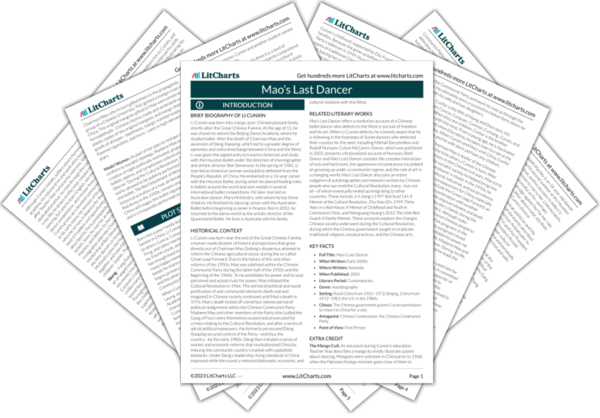In Cunxin’s experience, the Chinese Communist Party’s main goals for most of his life have been to ensure absolute conformity and ideological purity within society and to stand aloof from the rest of the world. With Mao’s death and Deng’s ascension to power, things begin to shift, subtly at first, as Deng opens China to the outside world. This marks a crucial turning point in Chinese society. And while the book at this moment emphasizes the changes in society, readers should remain alert for clues about the limitations of Deng’s approach, too.
